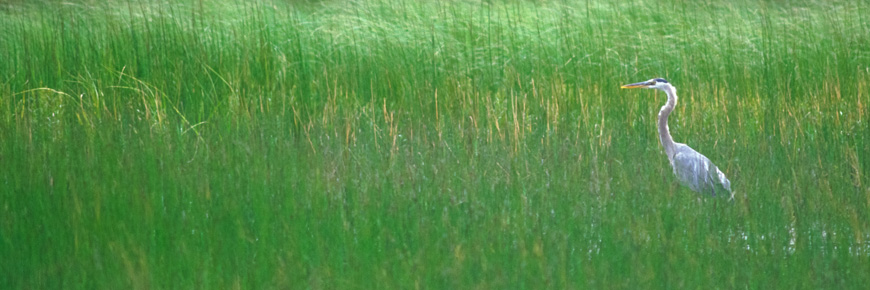
Marsh birds
Lake Superior National Marine Conservation Area
Wetlands are biologically diverse and ecologically important habitats, but they are rather limited within Lake Superior NMCA, as most shorelines tend to be quite rocky, and exposed to wind and wave action. The wetlands that do occur are therefore considered quite important for the plant species they support, as well as the breeding / nursery habitat for fish, birds and other wildlife.
In late June and early July 2017, staff carried out wetland monitoring, following the Great Lakes Marsh Monitoring Program (MMP) coordinated by Bird Studies Canada. An MMP survey route was set up along the Nipigon River, consisting of three sample stations accessed from the Nipigon-Red Rock hiking trail. Each station is a semi-circular survey area with a radius of 100 metres, facing areas of emergent marsh vegetation.
The MMP is designed to monitor both amphibian and bird populations; the program was implemented too late in the season for amphibian monitoring but bird monitoring was successfully sampled twice. Bird surveys used a broadcast recording to elicit calls from marsh birds that are not easily detected using other survey techniques.
None of the focal species were observed, although other marsh bird species were recorded. Other biologists working in the region have noted that wetlands along Lake Superior tend to be lacking in nesting waterbirds; one proposed explanation is the effect of seiches – dramatic variation in water levels that make nesting on or near water very difficult. Lake Superior NMCA plans to continue the Marsh Monitoring Program in coming years, and potentially establish a route in another location, such as Hurkett Cove.
- Date modified :